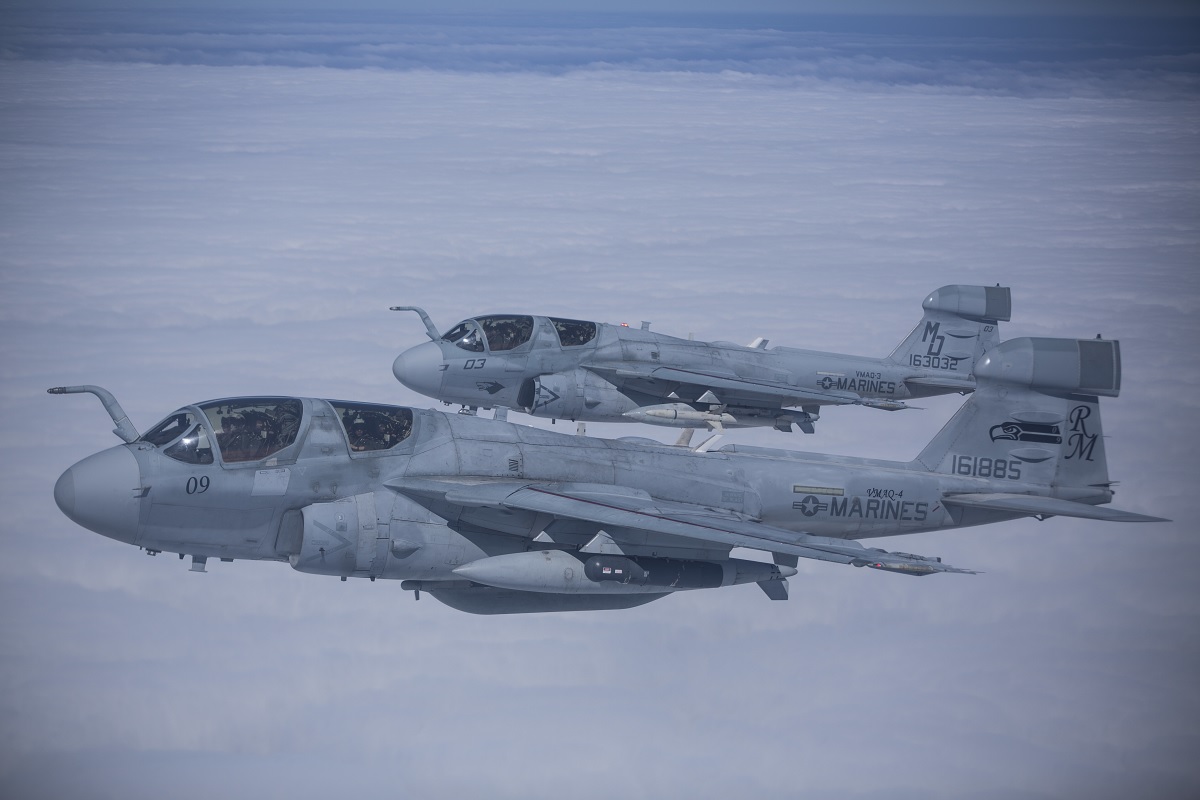Since 1977, the EA-6B Prowler has provided support to the US Marine Corps and coalition forces across the world
A 1977 newspaper headline read “‘Can do easy’ Marines get their first EA-6B,” according to Cpl. Jason Jimenez, Marine Corps Air Station Cherry Point, in his article MAG-14 Prowlers fly toward sundown, legacy intact through 40th anniversary, highlighting Marine Electronic Warfare Squadron (VMAQ) 2 as the first VMAQ in Marine Aircraft Group 14’s history to receive an EA-6B Prowler.
The Prowler’s 40th anniversary of active service in MAG-14, 2nd Marine Aircraft Wing, can only be described as a bittersweet acknowledgment and look back on its impact on USMC aviation on February 23, 2017.
When the Prowler arrived at Marine Corps Air Station (MCAS) Cherry Point, N.C., as a replacement for the EA-6A Electric Intruder, the former leading electronic warfare aircraft during the Vietnam War, the Marine Corps formed a bond with it. The Prowler has since taken part in every known American conflict.
“[As] one of the last naval flight officers assigned to VMAQ-2 to fly the EA-6A Electric Intruder before the Prowler transition, I had the opportunity to fly and operate the manually controlled EW and [electronic attack] systems that earned the [electronic and photographic] community their stellar EW reputation over the skies of North Vietnam,” said Lt. Col. (Ret.) Rick Johnson, former Prowler pilot with VMAQ-2.
The EA-6B Prowler’s primary purpose is to suppress enemy air defenses in support of strike aircraft and ground troops by interfering with adversary electronic activity and gathering tactical electronic intelligence within the battle zone.
“Those EW systems by today’s standards would be considered antiquated and obsolete, but during the Vietnam conflict they were ‘state of the art,’ said Johnson.
Five tactical jamming pods, electronic surveillance systems, radar-seeking High-Speed Anti-Radiation Missiles, non-kinetic fire systems that disable but do not destroy electronic equipment, and countermeasures that mask the approach of nearby ground-attack aircraft are all included in the Marine Prowler’s arsenal.
“Being a pilot and flying in a legacy aircraft is a testament to the ability of the aircraft,” said Maj. Nathan Baker, the operations officer with MAG-14. “You’re still flying the same aircraft that was flown 40 years ago. No other tactical jet aircraft in the Marine Corps has ever lasted that long.”
During Operation Desert Storm in 1991, 12 Marine Corps Prowlers flew 516 hours without sustaining any losses. In 2007, the Prowler was used in anti-improvised explosive device (IED) operations in Afghanistan, blocking remote detonation devices and saving several lives. In 2013, VMAQ-1 became a training squadron to assist future Prowler missions, such as those carried out by VMAQ-3 and VMAQ-4 over Iraq in 2014.
“The aircraft being almost 50 years old in terms of design does make it a little more difficult to fly versus some of our newer aircraft such as the [F-35 lighting II],” said Baker.
Each year, one VMAQ squadron will be deactivated until the Prowler sunset in 2019.
“I’m excited for the transition and for the aircraft to continue its service until its sundown,” said Baker.
When Prowler lands for the last time in 2019, the electronic warfare community will be bidding farewell to a heritage aircraft.
Since 1977, the twin-engine, mid-wing, long-range, all-weather aircraft has provided assistance to the US Marine Corps and coalition troops around the world.

Photo by Cpl. Jodson B. Graves / U.S. Marine Corps

